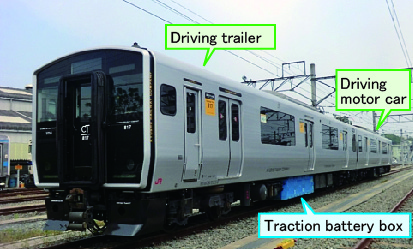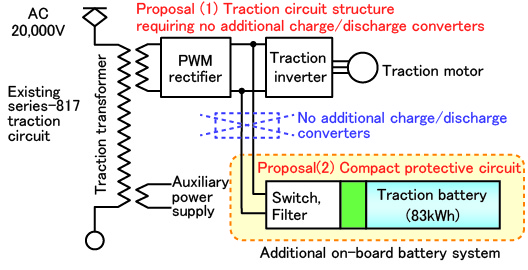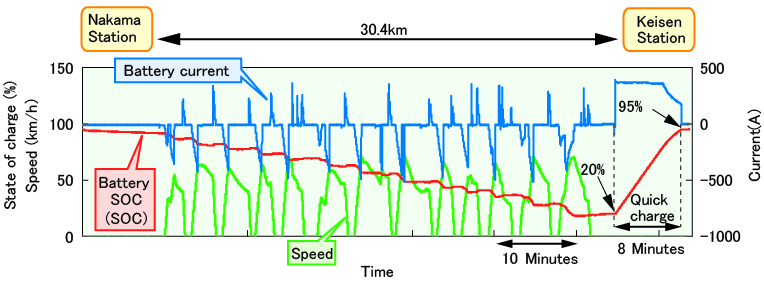2. Development of a hybridized battery and AC dual source conventional line train
- We have developed a high capacity/high voltage battery system requiring no additional charge/discharge converters.
- Various properties were verified such as ability to suppress battery temperature to around 50℃, prevent contact wire over-heating during quick charge, and one charge running distance was approximately 30 km fed by a 83-kWh battery when no A/C operates.
A battery-powerd and AC dual source test train was developed in cooperation with JR Kyushu etc. by mounting a lithium-ion battery to an existing AC train, to make it possible to run seamlessly between electrified and non-electrified sections of line. (Fig.1). A high voltage high capacity traction battery (1382V-83kWh) was fitted into the limited under-floor space of the train. The developed traction circuit avoids the need for an additional charge/discharge device. A compact protective circuit for the battery was designed and developed to comply with electrical safety requirements (Fig. 2).
The running performance of the test train was examined when running solely on the battery power. Results showed that if A/C is not used, the running distance of the test train was approximately 30km from Nakama to Keisen Station, on the Chikuho line. Quick charging made it possible to bring the battery's 20% state of charge (SOC) to almost 100% in about 8minutes (Fig.3). Verification was made to ensure that the trolley wire did not overheat during quick charging at a standstill even when the pantograph contact strip was made with metalized carbon. The temperature of the battery was kept under 50℃ (max.) during test runs by a cooler fan, keeping well within the limit temperature of 65℃.
Running tests confirmed that the performance of the test train was sufficient to run seamlessly between electrified and non-electrified sections of line. Furthermore insight was gained into energy consumption and battery temperature, required for a mass-production design.

Fig.1 Outside view of battery-powered dual source EMU
(test train)
Fig.2 Configuration of the traction circuit
Fig.3 An example of running test results fed by the on-board battery